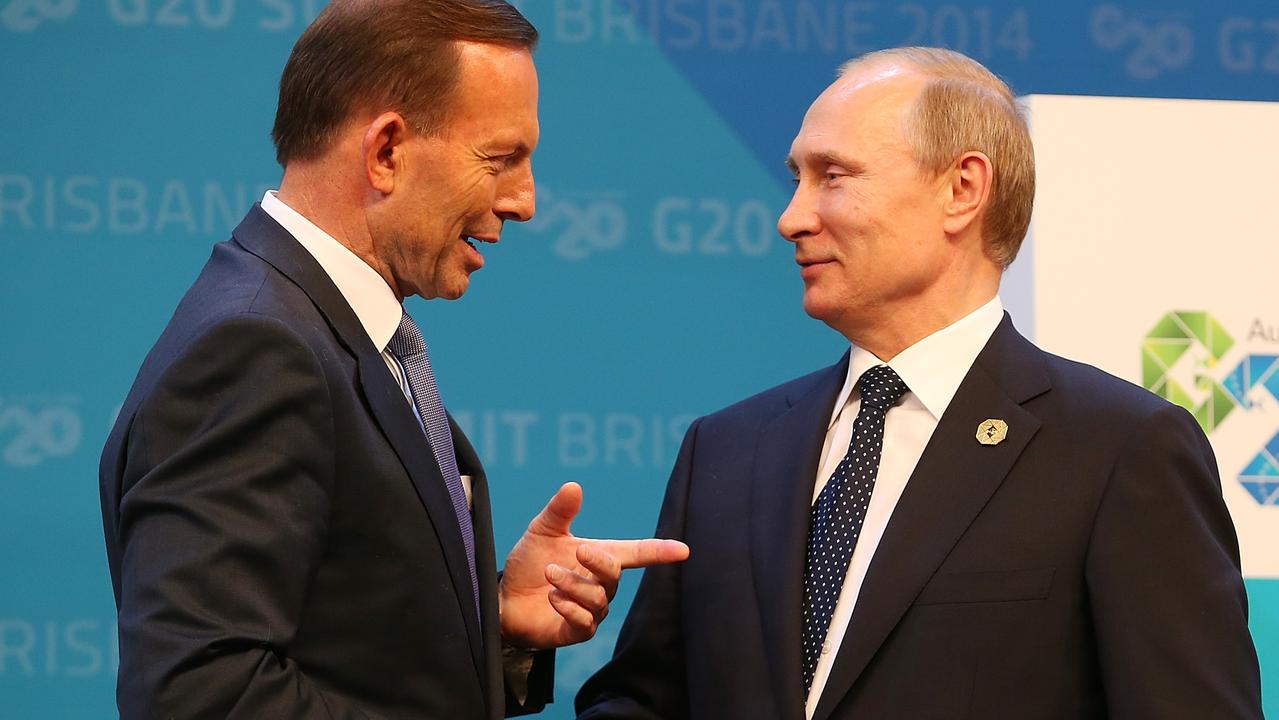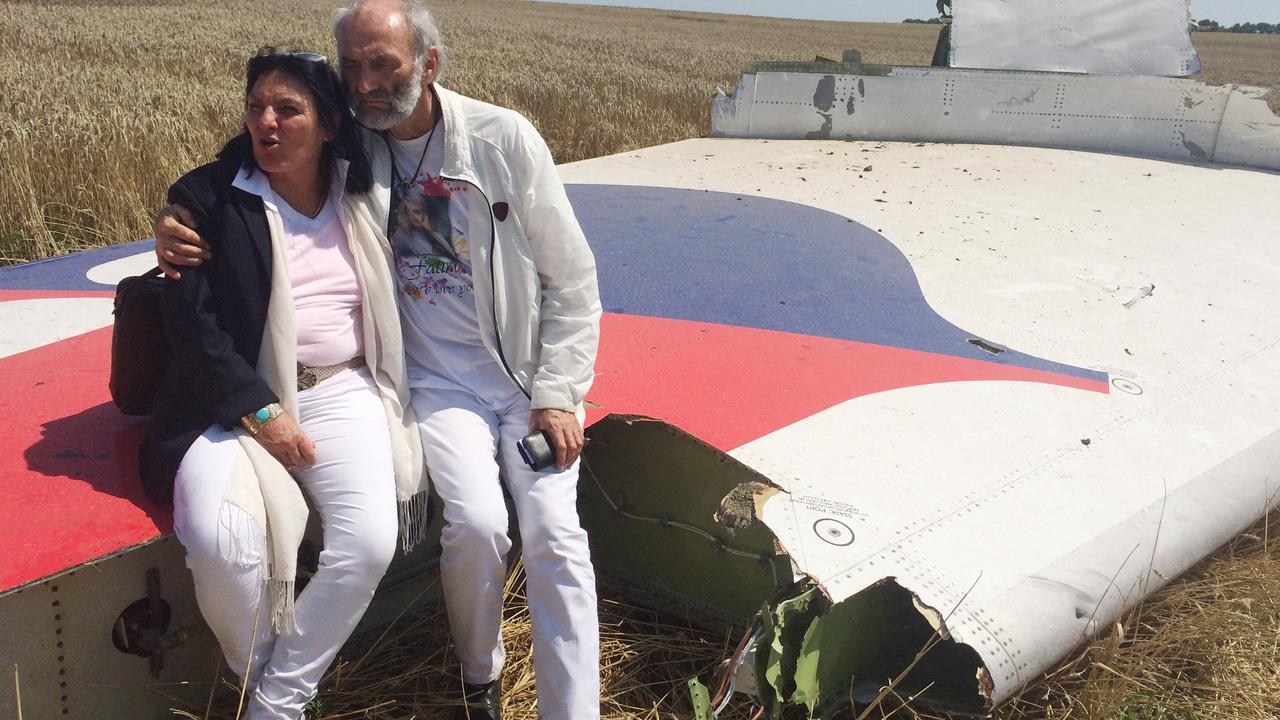MH17: Russia’s UN veto of tribunal leaves no doubt who’s guilty

Moscow’s veto of the UN investigation into the destruction of Malaysia Airlines Flight MH17 leaves little doubt the airliner was shot down by a Russian-designed missile fired from Ukrainian territory by a Russian crew or separatists trained by Russian military experts.
It is likely that the operators of the mobile missile-launcher made a terrible mistake when they fired the missile at what they believed was a Ukrainian Antonov military transport aircraft.
And that disastrous miscalculation was almost certainly a consequence of a decision made at a high level in the Russian government to provide a potent anti-aircraft capability to the rebels it was backing in eastern Ukraine.
The rebels have used missiles believed to have been captured from Ukrainian bases to destroy Ukrainian strike aircraft attacking the separatist positions and transport planes flying in reinforcements and supplies to the defenders.
In the weeks before the disaster, at least two Ukrainian aircraft were shot down by the rebels.
The first report on the plane’s destruction, released last September, revealed that the cockpit of MH17 was torn apart by a mass of objects travelling at high speed as it flew over eastern Ukraine at 33,000 feet. All 283 passengers and 15 crew aboard the Boeing 777 were killed, including 39 Australians or Australian residents.
The preliminary investigation report by the International Civil Aviation Organisation drew on data from the aircraft’s black box flight recorder and cockpit voice recorder, satellite imagery and photos from the crash site.
The report avoided any mention of Russian missiles, but what it described was consistent with a massive explosion just ahead of the aircraft and a deadly torrent of shrapnel. That reinforced the view that a Buk missile was used.
At the time, Tony Abbott and Deputy Prime Minister Warren Truss said the findings were based on an objective analysis of available evidence and were consistent with the government’s view that MH17 was shot down by a large surface-to-air missile.
The report said the cockpit voice recorder stopped abruptly and with no indication the crew had time to say or do anything. They made no emergency call.
With the cockpit shattered, the aircraft’s fuselage broke up, with the wreckage falling over an area 10km long and 5km wide.
The report found the destruction was not caused by aircraft malfunction or pilot error and everything was operating normally until the explosion.
Photographs of pieces of the cockpit and the front of the aircraft showed multiple holes and indentations that indicated they had been punctured by a mass of objects travelling at high speed.
Soon after the disaster, US Secretary of State John Kerry revealed that shocked US officials watched, as the attack occurred, real-time satellite images showing the missile being fired and the explosion as it blasted the airliner.
‘‘This type of weapon, all the evidence of it was seen on our imagery,” Mr Kerry said.
“We saw the take-off. We saw the trajectory, we saw the hit. We saw this aeroplane disappear from the radar screens.
“There is really no mystery about where it came from and where these weapons have come from.”
The Soviet-era Buk SA-11 system used to shoot the plane down was not the most modern Russian missile but was sophisticated and relatively complicated to operate. ‘‘Let’s not kid ourselves that this complex bit of equipment could be operated by a coalminer or a sunflower farmer out of Donetsk,” global defence specialist Paul Dibb told The Australian recently.
Such equipment was widely distributed through the nations that made up the old Soviet Union. The Russian-made mobile launcher had to be appropriately placed, the radar switched on, the fast-moving target located, tracked and ‘‘illuminated”, and the radar locked on to it. Then the missile had to be fired.
Russian Foreign Minister Sergei Lavrov has denied his country was involved. The separatists have also denied involvement and claimed they did not have a missile-launcher capable of shooting down the aircraft. But they had announced before the disaster that they had captured a Buk launcher from a Ukrainian military base in Donetsk.
Russia has also claimed that a Ukrainian fighter pilot shot down the airliner believing it was a Russian aircraft with President Vladimir Putin aboard.
However, the evidence found by the crash investigators indicates that the missile that destroyed MH17 had a proximity fuse that set off the explosion ahead of the airliner.
An air-to-air missile fired by a jet fighter would most likely have hit one of the aircraft’s engines.
After MH17 was shot down on July 17 last year, pictures emerged of a mobile missile-launcher crossing back into Russia with one of its four missiles missing.
Soon after the aircraft vanished from radar screens, a local rebel leader claimed his men had shot down a Ukrainian aircraft.
Then he was told his men had reached the crash site and found the bodies of many women and children. After that, the original claim was quickly withdrawn.
A Ukrainian security agency claimed it had intercepted two phone conversations in which a pro-Russian rebel leader, Igor Bezler, his superior Vasily Geranin, a rebel fighter called “Major” and another called “Greek” discussed the crash.
According to a widely distributed transcript, Bezler says: “We have just shot down a plane. Group Minera. It fell down beyond Yenakievo.’’
Geranin: “Pilots. Where are the pilots?’’
Bezler: “Gone to search for and photograph the plane. It’s smoking.’’
Geranin: “How many minutes ago?”
Bezler: “About 30 minutes ago.”
About 40 minutes later, Major is heard to say: “These are Chernukhin folks shot down the plane. From the Chernukhin checkpoint. Those cossacks who are based in Chernukhino.’’
Greek replies: “Yes, Major.’’
Major: “The plane fell apart in the air. In the area of Petropavlovskaya mine.”
The men confirm it was a civilian aircraft and wreckage had fallen into the yards of local homes.
Greek: “What kind of aircraft?”
Major: “I haven’t ascertained this. I haven’t been to the main site. I am only surveying the scene where the first bodies fell. There are the remains of internal brackets, seats and bodies.’’
Greek: “Is there anything left of the weapon?’’
Major: “Absolutely nothing. Civilian items, medicinal stuff, towels, toilet paper.”



To join the conversation, please log in. Don't have an account? Register
Join the conversation, you are commenting as Logout